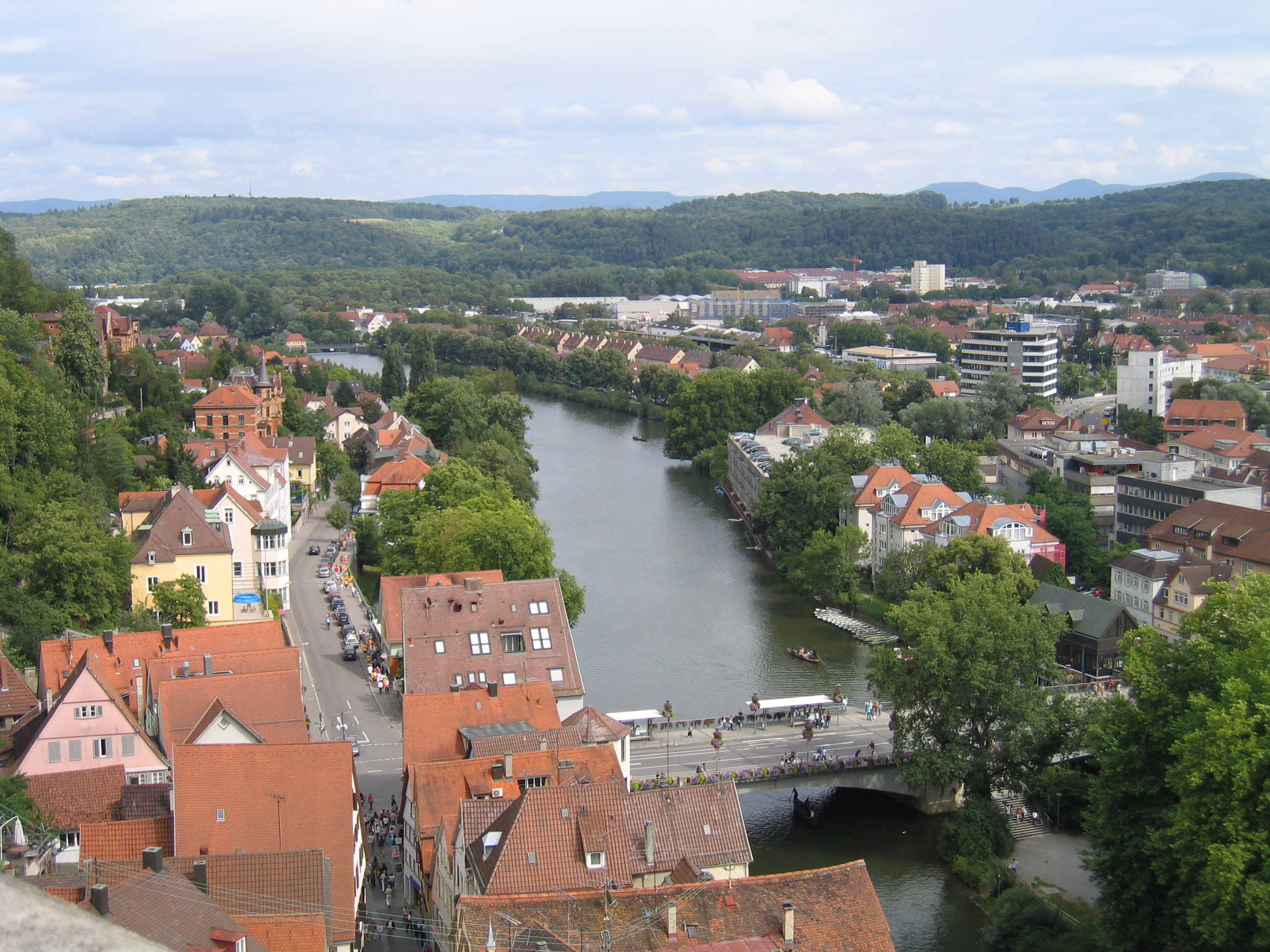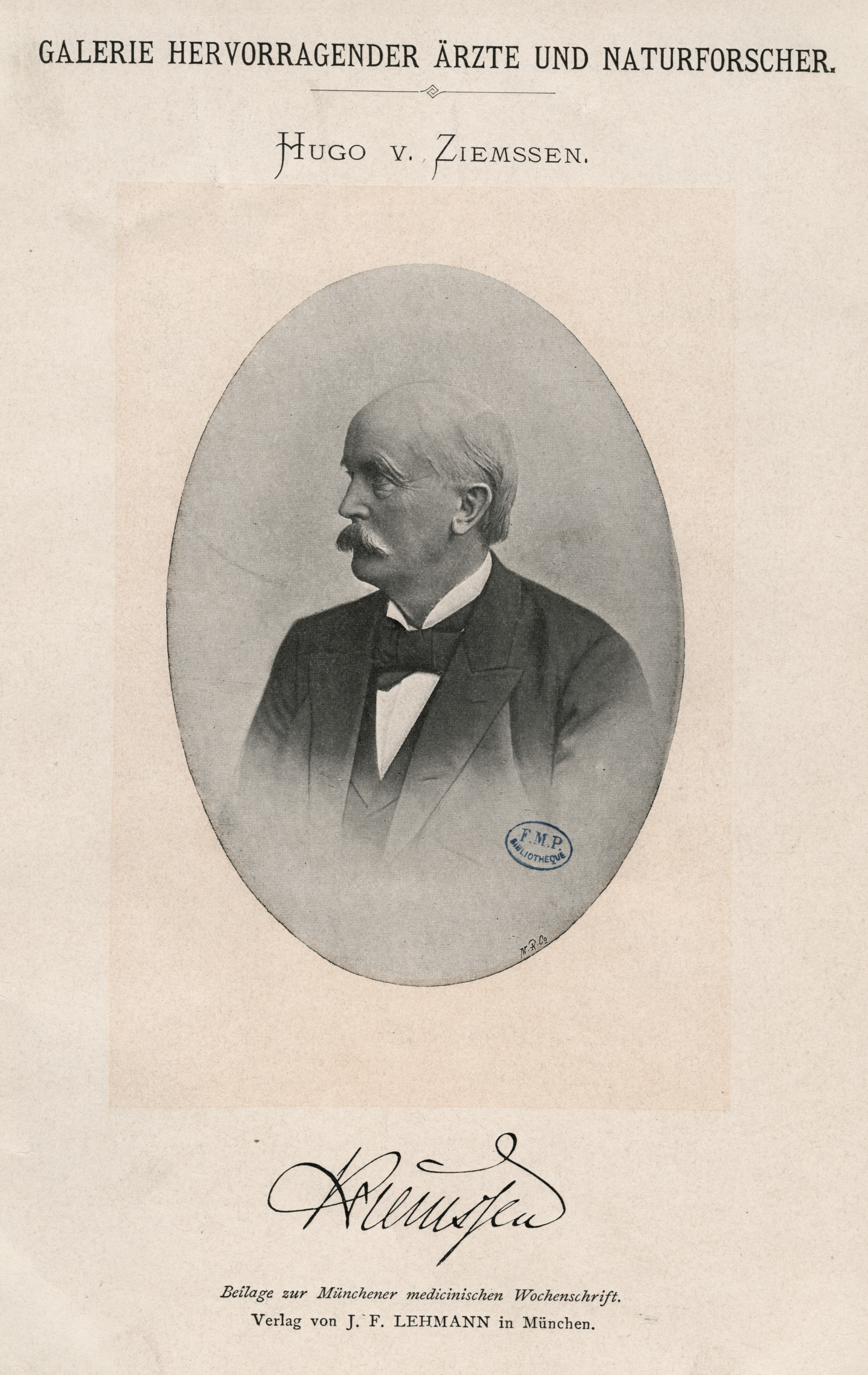|
Felix Victor Birch-Hirschfeld
Felix Victor Birch-Hirschfeld (2 May 1842 – 19 November 1899) was a German pathologist who was a native of Kluvensieck bei Rendsburg. Biography In 1867 he received his medical doctorate from the University of Leipzig, where he studied under Carl Reinhold August Wunderlich (1815–1877) and Ernst Leberecht Wagner (1828–1888). In 1870 he became a prosector at the city hospital in Dresden, and in 1885 returned to Leipzig, where he succeeded Julius Cohnheim (1839–1884) as chair of pathological anatomy. One of his better known assistants was pathologist Christian Georg Schmorl (1861–1932). Birch-Hirschfeld made important contributions in several facets of pathological medicine. He is known for his work in the field of bacteriology, with tuberculosis being the primary focus in regards to infectious diseases. In 1898 he described the unitary nature of nephroblastoma. Associated eponym * "Birch-Hirschfeld stain": A stain that was formerly used for demonstrating amyloid, and c ... [...More Info...] [...Related Items...] OR: [Wikipedia] [Google] [Baidu] |
Amyloid
Amyloids are aggregates of proteins characterised by a fibrillar morphology of typically 7–13 nm in diameter, a β-sheet secondary structure (known as cross-β) and ability to be stained by particular dyes, such as Congo red. In the human body, amyloids have been linked to the development of various diseases. Pathogenic amyloids form when previously healthy proteins lose their normal structure and physiological functions ( misfolding) and form fibrous deposits within and around cells. These protein misfolding and deposition processes disrupt the healthy function of tissues and organs. Such amyloids have been associated with (but not necessarily as the cause of) more than 50 human diseases, known as amyloidosis, and may play a role in some neurodegenerative diseases. Some of these diseases are mainly sporadic and only a few cases are familial. Others are only familial. Some result from medical treatment. Prions are an infectious form of amyloids that can act as a templa ... [...More Info...] [...Related Items...] OR: [Wikipedia] [Google] [Baidu] |
1842 Births
Events January–March * January 6–January 13, 13 – First Anglo-Afghan War – Massacre of Elphinstone's army (Battle of Gandamak): British East India Company troops are destroyed by Afghan forces on the road from Kabul to Jalalabad, Afghanistan, by Wazir Akbar Khan, Akbar Khan, son of Dost Mohammad Khan (Emir of Afghanistan), Dost Mohammad Khan. * January 8 – Delft University of Technology is established by William II of the Netherlands, as a 'Royal Academy for the education of civilian engineers'. * January 23 – Antarctic explorer James Clark Ross, charting the eastern side of James Ross Island, reaches a Farthest South of 78°09'30"S. * January ** Michael Alexander (bishop), Michael Alexander takes office, as the first appointee to the Anglican-German Bishopric in Jerusalem. ** United States, American medical student William E. Clarke of Berkshire Medical College becomes the first person to administer an inhaled anesthetic, to facilitate a surgical procedure. ... [...More Info...] [...Related Items...] OR: [Wikipedia] [Google] [Baidu] |
Who Named It
''Whonamedit?'' is an online English-language dictionary of medical eponyms and the people associated with their identification. Though it is a dictionary, many eponyms and persons are presented in extensive articles with comprehensive bibliographies. The dictionary is hosted in Norway Norway, officially the Kingdom of Norway, is a Nordic countries, Nordic country located on the Scandinavian Peninsula in Northern Europe. The remote Arctic island of Jan Mayen and the archipelago of Svalbard also form part of the Kingdom of ... and was developed by medical historian Ole Daniel Enersen. References External links * Medical websites Medical dictionaries Eponyms in medicine {{online-dict-stub ... [...More Info...] [...Related Items...] OR: [Wikipedia] [Google] [Baidu] |
List Of Pathologists
A list of people notable in the field of pathology. A * John Abercrombie, Scottish physician, neuropathologist and philosopher. * Maude Abbott (1869–1940), Canadian pathologist, one of the earliest women graduated in medicine, expert in congenital heart diseases. * Emile Achard (1860–1944), French internist and pathologist. * A. Bernard Ackerman (1936–2008), American dermatopathologist & dermatologist * Lauren Ackerman (1905–1993), American pathologist and one of the fathers of Surgical pathology. * Theodor Ackermann (1825–1896), German pathologist. * Albert Wojciech Adamkiewicz (1850–1921), Polish pathologist, (see Artery of Adamkiewicz). * W. Stewart Alexander, contemporary British pathologist (see Alexander disease). * Dame Ingrid Allen, Northern Irish neuropathologist. * Friedrich August von Ammon (1799–1861), German ophthalmologist and pathologist. * Gabriel Andral (1797–1876) French pathologist. * Peter Angritt (1938-2024), U.S. Army colonel ... [...More Info...] [...Related Items...] OR: [Wikipedia] [Google] [Baidu] |
Pathology
Pathology is the study of disease. The word ''pathology'' also refers to the study of disease in general, incorporating a wide range of biology research fields and medical practices. However, when used in the context of modern medical treatment, the term is often used in a narrower fashion to refer to processes and tests that fall within the contemporary medical field of "general pathology", an area that includes a number of distinct but inter-related medical specialties that diagnose disease, mostly through analysis of tissue (biology), tissue and human cell samples. Idiomatically, "a pathology" may also refer to the predicted or actual progression of particular diseases (as in the statement "the many different forms of cancer have diverse pathologies", in which case a more proper choice of word would be "Pathophysiology, pathophysiologies"). The suffix ''pathy'' is sometimes used to indicate a state of disease in cases of both physical ailment (as in cardiomyopathy) and psych ... [...More Info...] [...Related Items...] OR: [Wikipedia] [Google] [Baidu] |
Tübingen
Tübingen (; ) is a traditional college town, university city in central Baden-Württemberg, Germany. It is situated south of the state capital, Stuttgart, and developed on both sides of the Neckar and Ammer (Neckar), Ammer rivers. about one in three of the 90,000 people living in Tübingen is a student. As of the 2018/2019 winter semester, 27,665 students attend the University of Tübingen, Eberhard Karl University of Tübingen. The city has the lowest median age in Germany, in part due to its status as a university city. As of December 31, 2015, the average age of a citizen of Tübingen is 39.1 years. Immediately north of the city lies the Schönbuch, a densely wooded nature park. The Swabian Alb mountains rise about (beeline Tübingen City to Roßberg - 869 m) to the southeast of Tübingen. The Ammer and Steinlach rivers are Tributary, tributaries of the Neckar river, which flows in an easterly direction through the city, just south of the Middle Ages, medieval old town. La ... [...More Info...] [...Related Items...] OR: [Wikipedia] [Google] [Baidu] |
Carl Jakob Adolf Christian Gerhardt
Carl Jakob Adolf Christian Gerhardt (there are several variations regarding the arrangement of his 3 middle names; 5 May 1833 – 22 July 1902) was a German internist born in Speyer. Biography He studied medicine at the University of Würzburg, earning his doctorate in 1856. Subsequently, he was an assistant to Heinrich von Bamberger (1822–1888) and Franz von Rinecker (1811–1883) in Würzburg, and worked under Wilhelm Griesinger (1817–1868) in Tübingen. In 1860 he received his habilitation in Würzburg, and during the following year was appointed professor of medicine and head of the department of internal medicine at the University of Jena. In 1872 he returned to the University of Würzburg to fulfill similar duties. In 1885 he was successor to pathologist Friedrich Theodor von Frerichs (1819–1885) at the Charité in Berlin, where he established the second internal medicine clinic. At Berlin, one of his assistants was immunologist Paul Ehrlich (1854–1915). H ... [...More Info...] [...Related Items...] OR: [Wikipedia] [Google] [Baidu] |
Spleen
The spleen (, from Ancient Greek '' σπλήν'', splḗn) is an organ (biology), organ found in almost all vertebrates. Similar in structure to a large lymph node, it acts primarily as a blood filter. The spleen plays important roles in regard to red blood cells (erythrocytes) and the immune system. It removes old red blood cells and holds a reserve of blood, which can be valuable in case of Shock (circulatory), hemorrhagic shock, and also Human iron metabolism, recycles iron. As a part of the mononuclear phagocyte system, it metabolizes hemoglobin removed from senescent red blood cells. The globin portion of hemoglobin is degraded to its constitutive amino acids, and the heme portion is metabolized to bilirubin, which is removed in the liver. The spleen houses antibody-producing lymphocytes in its white pulp and monocytes which remove antibody-coated bacteria and antibody-coated blood cells by way of blood and lymph node circulation. These monocytes, upon moving to injured ... [...More Info...] [...Related Items...] OR: [Wikipedia] [Google] [Baidu] |
Liver
The liver is a major metabolic organ (anatomy), organ exclusively found in vertebrates, which performs many essential biological Function (biology), functions such as detoxification of the organism, and the Protein biosynthesis, synthesis of various proteins and various other Biochemistry, biochemicals necessary for digestion and growth. In humans, it is located in the quadrants and regions of abdomen, right upper quadrant of the abdomen, below the thoracic diaphragm, diaphragm and mostly shielded by the lower right rib cage. Its other metabolic roles include carbohydrate metabolism, the production of a number of hormones, conversion and storage of nutrients such as glucose and glycogen, and the decomposition of red blood cells. Anatomical and medical terminology often use the prefix List of medical roots, suffixes and prefixes#H, ''hepat-'' from ἡπατο-, from the Greek language, Greek word for liver, such as hepatology, and hepatitis The liver is also an accessory digestive ... [...More Info...] [...Related Items...] OR: [Wikipedia] [Google] [Baidu] |
Hugo Wilhelm Von Ziemssen
Hugo (Wilhelm) von Ziemssen (13 December 1829 – 21 January 1902) was a German physician, born in Greifswald. He studied medicine at the universities of Greifswald, Berlin, and Würzburg. In 1863 he was called to the University of Erlangen as a professor of pathology and therapy as well as the director of the medical clinic. In 1874 he relocated to Munich as a professor and director of the general hospital.Thibaut - Zycha, Volume 10 edited by Walther Killy He made advances in electrotherapeutics, conducted research on cold-water treatment for |
Rudolf Virchow
Rudolf Ludwig Carl Virchow ( ; ; 13 October 18215 September 1902) was a German physician, anthropologist, pathologist, prehistorian, biologist, writer, editor, and politician. He is known as "the father of modern pathology" and as the founder of social medicine, and to his colleagues, the "Pope of medicine". Virchow studied medicine at the Friedrich Wilhelm University under Johannes Peter Müller. While working at the Charité hospital, his investigation of the 1847–1848 typhus epidemic in Upper Silesia laid the foundation for public health in Germany, and paved his political and social careers. From it, he coined a well known aphorism: "Medicine is a social science, and politics is nothing else but medicine on a large scale". His participation in the Revolution of 1848 led to his expulsion from Charité the next year. He then published a newspaper ''Die Medizinische Reform'' (''The Medical Reform''). He took the first Chair of Pathological Anatomy at the University of Wü ... [...More Info...] [...Related Items...] OR: [Wikipedia] [Google] [Baidu] |









